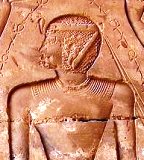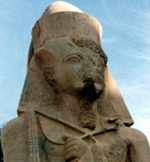|
By
the end of reign of the last Ramesses the rule all over the land was
held actually by its vizier and viceroy of Nubia, the first prophet of
Amun – Herhor. His rule inaugurates dynasty of high priests of Amun,
reigning at Thebes. At the same time at Tanis and Busiris reigns
dynasty XXI founded by Smendes,
replaced later by Libyan
dynasty XXII founded by Sheshonq. Some of the high
priests hold rule all over Egypt or at least endeavor to show their
right to rule by adopting full royal titulary. Others seem to be
satisfied with their function of high priests and remain fully loyal to
the kings reigning in the North, to whom they often are closely related.
|
||

 F
F S
S



